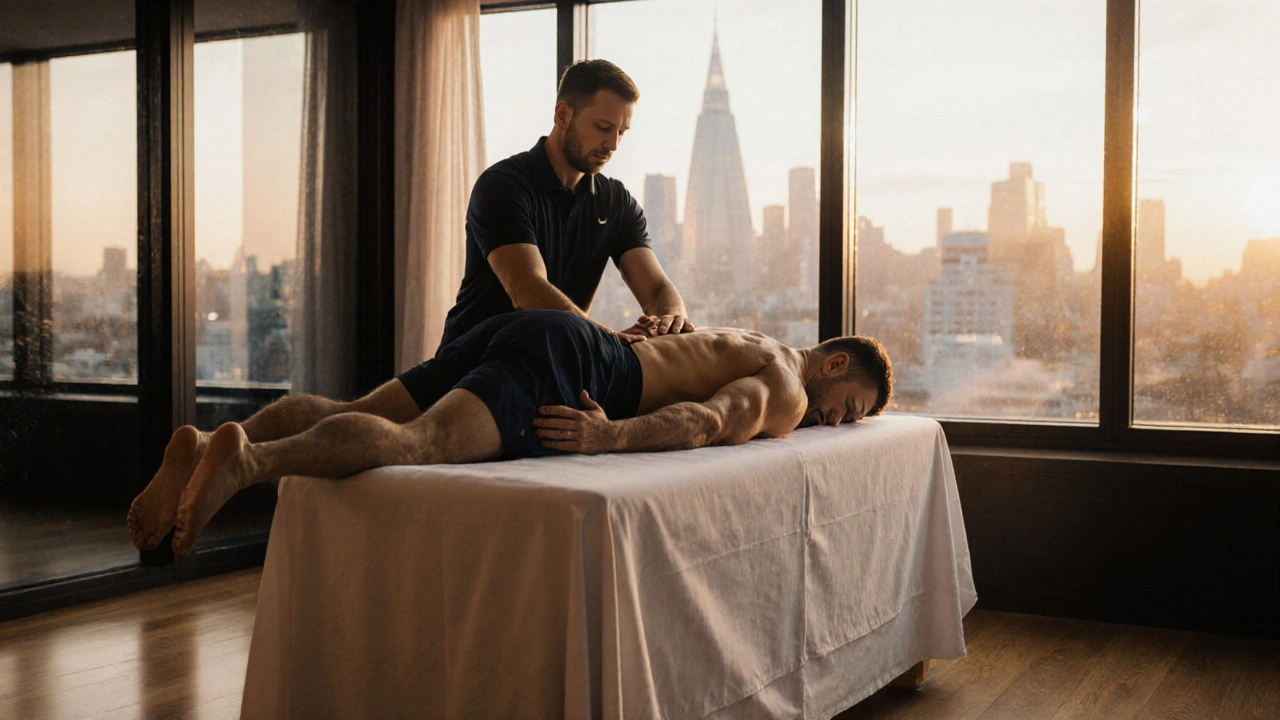Discover how sports massage in London boosts fitness, speeds recovery, and prevents injuries. Learn benefits, types, pricing, safety tips, and how to book your session.
Fitness Recovery: Massage Techniques to Speed Up Your Healing
When talking about Fitness Recovery, the process of restoring physical performance after exercise through rest, nutrition, and therapeutic practices. Also known as post‑workout recovery, it relies on several tools to get you back on track faster. One of the most effective tools is Sports Massage, a targeted massage technique that helps athletes reduce soreness and improve circulation. Deep Tissue Massage, a pressure‑focused method that breaks down chronic muscle knots also plays a big role. And don’t overlook Thai Massage, a hybrid of stretching and pressure that boosts flexibility and joint health. Together, these therapies create a network of benefits that accelerates recovery, reduces injury risk, and keeps performance steady.
Why Massage Matters for Fitness Recovery
Fitness recovery encompasses more than just licking your wounds; it demands active interventions. Sports massage improves blood flow, delivering oxygen and nutrients to fatigued muscles, which speeds up tissue repair. Deep tissue massage targets lingering tension, releasing fascia that can limit range of motion and cause pain. Thai massage integrates rhythmic stretches, helping joints regain their natural mobility after intense sessions. These three approaches interact with each other, forming a holistic regimen that supports the body’s natural healing cycles.
Most athletes think a quick stretch is enough, but research shows that a 30‑minute session of sports massage after a hard workout can lower cortisol levels by up to 30%, while increasing serotonin, which translates to less perceived fatigue. Deep tissue massage, applied twice a week, has been linked to a 20% reduction in delayed‑onset muscle soreness (DOMS) for runners. Thai massage, with its emphasis on active movement, helps maintain muscle elasticity, preventing the stiffness that often follows prolonged training blocks. By combining these therapies, you create a layered defense against the wear and tear of regular exercise.
Choosing the right massage depends on your current training load and personal preferences. If you’ve just completed a high‑intensity interval session, a sports massage focused on the legs and core can flush out metabolic waste. When you’re dealing with stubborn knots in the shoulders or lower back, deep tissue offers the pressure needed to break them down. For those who feel restricted after a week of heavy lifting, a Thai session can re‑activate muscle fibers and improve joint range. Understanding these nuances lets you design a recovery plan that fits your schedule, budget, and performance goals.
Below you’ll find a curated collection of articles that dive deeper into each technique, share real‑world tips for booking the right therapist in London, and explain what to expect during a session. Whether you’re a weekend warrior or a seasoned pro, these guides will help you turn massage into a regular part of your fitness recovery routine.

